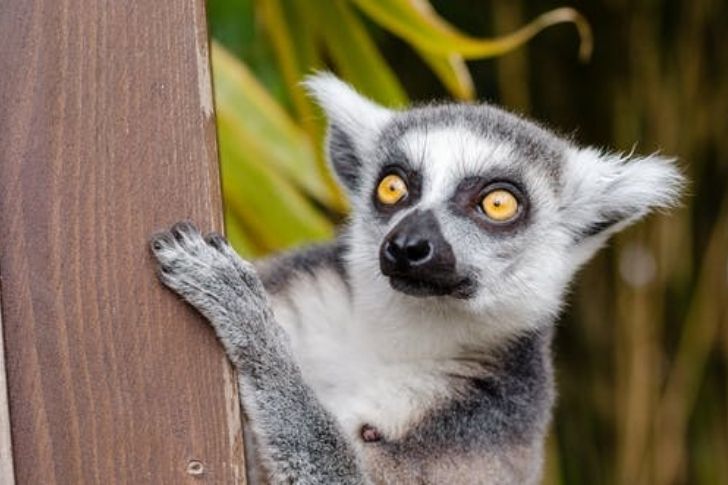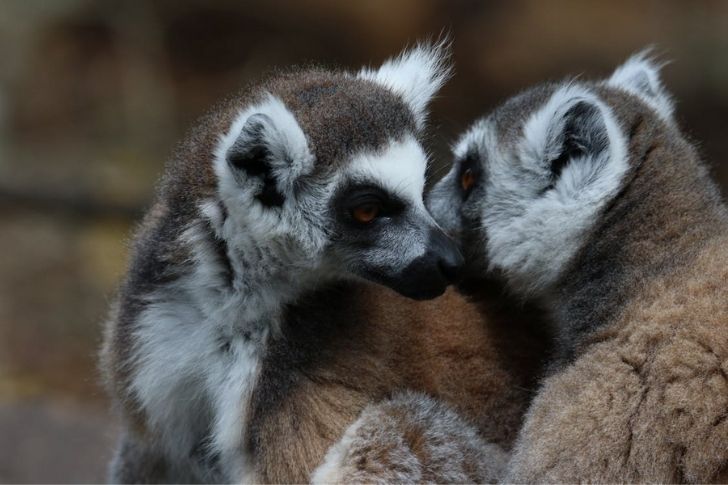Alex Dunlop From BBC News, Attacked by Lemurs While on Duty
When a reporter is on assignment, they can find themselves in unconventional locations such as wilderness areas and secret laboratories. Now, of course, no one is more equipped to explain what is happening than our good friend from BBC News, Alex Dunlop.
At the Banham Zoo in Norfolk, England, Alex met with different animals to estimate their population on January 8th. During their shoot, lemurs in the jungle unexpectedly joined the scene, and they made the headlines! Who in the world would not like to see themselves on the evening news? The only thing Alex could do was scramble to and find some friend to help him out. The reporter gives credit to these lemurs for making him famous!
When the lemurs are done using him as a jungle gym for their young, they laid a brief nip on his skin, nothing more. People worldwide found the funny video in which he seems to be reluctantly irritated and a little entertained by his current life’s peculiar conditions, which is very amusing.

LEMURS IN THE LIMELIGHT
The esteemed newsman even posted on his Twitter account and assured his viewers that no lemurs were harmed in the making of the video. Suddenly, he thought of a blog post that would chronicle his experience during that viral moment.
The lemurs decided to claim ownership of the habitat and dominate until the team reached their pen or self-declared home security system. The red-crested species being cute and adorably annoying helped Alex made that video viral. It seems like they have become more influential than Alex’s report!
After the news team has done all the necessary reporting, the best story might be about a bunch of lemurs in Norfolk. Alex had many severe topics on national television, but this story is worth watching more! Finally, he ended his blog with a final statement that conveyed the message that there were no zoo creatures harmed but only his pride. The journalist was sport enough, but this hilarious news sparked several stories on several facts about the animal lemurs.

A BRIEF HISTORY ABOUT LEMURS
Lemurs are known as prosimians. This term includes the species as well as other related creatures, including monkeys. They are a group of primates that includes all living and extinct strepsirrhines. On top of this, prosimians are considered to have characteristics that are more “primitive” than those of simians. There are a considerable number of lemurs still existing, but they are hard to count because of their degree of scarcity and the threat of being endangered. They are known to be the most threatened species in the world. In fact, this species is endemic to Madagascar and the Comoros islands.
It is no wonder that the lemurs, the natives of Madagascar, can be found in almost 105 different species, and each comes in a different size. The largest of the four lemur groups is the Indri. It can grow up to 60 inches or 39.3 centimeters and weigh approximately 22 pounds or 7 to 10 kilograms.

LEMUR LIVING
In case you’re wondering about the animal’s home security, they inhabit several diverse ecosystems, including dry trees and shrubs, fleshy forests, moist open woodlands, valleys, and bushland.
Lemurs are busy frolicking as youngsters and even when they are with their significant other. These furballs traditionally have a reputation for being terrestrial, meaning they are most active at night. More giant lemurs are seen as busy throughout the day, which is why they are regarded as nocturnal.
Lemurs are herbivores, which ensures they can consume any fruit, nuts, leaves, or plants they may come across. Fruit is highly appealing to them, but they often consume herbs, berries, tree bark, and sap. Other lemurs who like to vary diets also include berries, grape juice, plants, and roots. Still, there is also an equal interest in getting a significant number of insects and small mammals, particularly for their supplements.
The mating of lemurs is a battle for dominance, and for them, it is the world’s best smell. Males secrete secretions, then flash their tails wagging as a form of courtship, especially domestic cats. Since superiority was more important to him than remaining odor-free of maleness, the odorized male would be the winner.
Fledgling lemurs are referred to as pups. For certain lemur species, the woman carries the infant on her back for the first three or four weeks of development. The infant then climbs on to travel until it is around three to four months old at the time for their life’s insurance. Weaning usually occurs between three and six months of age.
Now that we’ve broken down what you need to know about lemurs, all that’s left for you to do is hope that you get to see one in your lifetime!
Photo Credits:
Pexels
Original Source

Recent Comments